What Are the Letters in Tab Guitar Reading
Guitar Tablature explained
Tab is brusk for tablature, a notational system used to give detailed information equally to where notes should be played on the fretboard.
Tab appears underneath conventional music annotation as six horizontal lines that stand for the strings of the guitar, from the sixth (thick) string at the lesser to the kickoff (thin) string at the top.
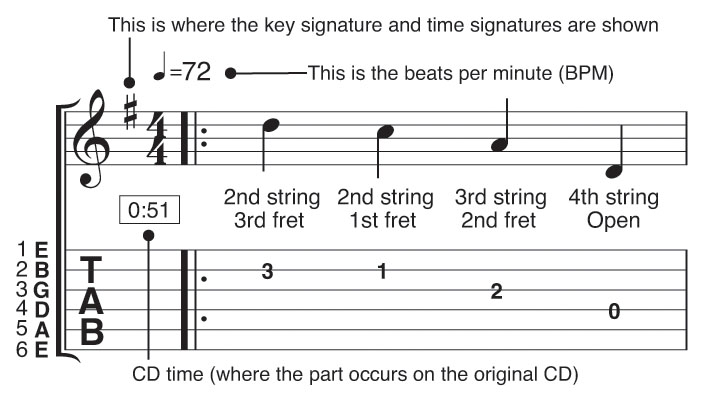
On these lines, numbers represent the frets where you should place your fingers. For example, an A note on the 2nd fret, third string, will be shown equally a number '2' on the tertiary line down on the tab. Unfretted strings are shown with a '0'.
The primal and time signatures are shown in the traditional notation. A timestamp may also tell you where in the original track you'll find each example. Finally, a tempo marking is expressed in beats per minute.
Once you've got the hang of reading tab, why not endeavor learning a few open-position guitar chords?
Fret boxes: chords, scales and capo notation
Mitt labelling
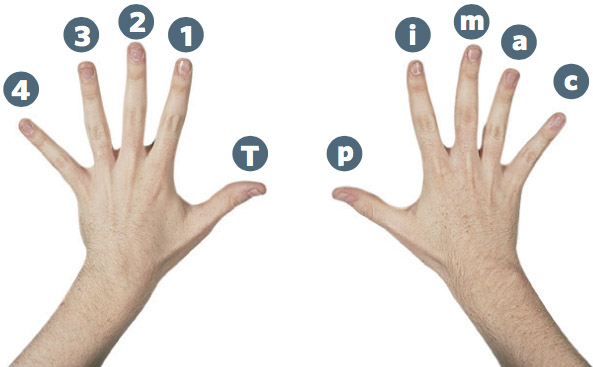
Here are the abbreviations used for each finger. Fretting manus: 1, 2, iii, 4, (T)
Picking hand: p (thumb), i (index), m (heart), a (annular), c (little finger)
Nut and fretboard

This fretbox diagram represents the guitar'due south fretboard exactly, every bit seen in the photograph. This design is used for ease of visualising a fretboard scale or chord quickly.
Chord example
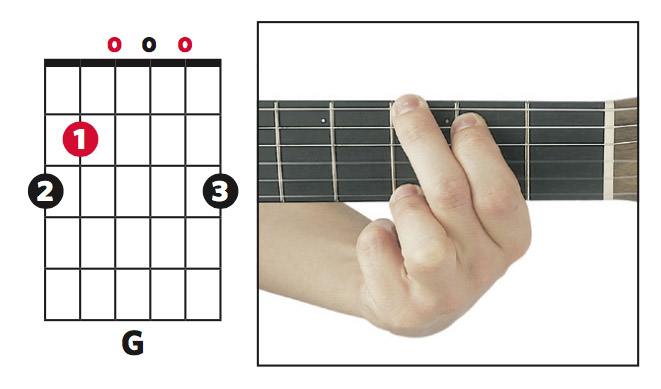
This diagram represents a G chord. The 'o's are open up strings, and a circled number is a fretting hand finger. A black 'o' or circled number is the root annotation (here, Thou).
Capo example
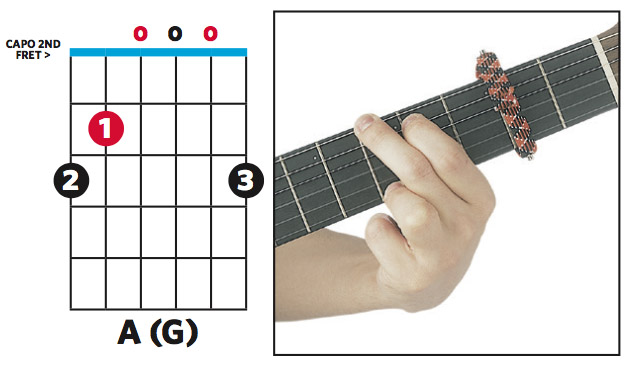
The blue line in the diagram represents a capo - for this A chord, place it at the 2nd fret. Capos change the fret number ordering. Here, the original 5th fret at present becomes the third fret, 7th fret now 5th fret, etc.
Capo note
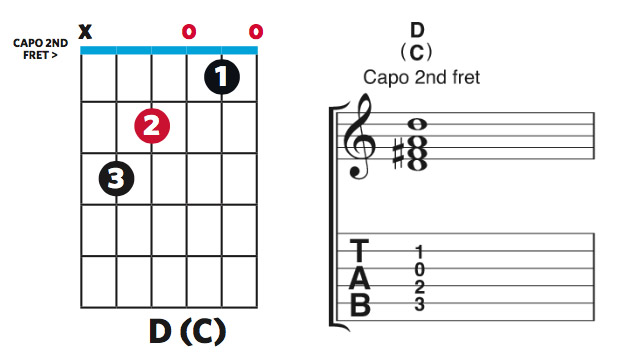
Here, the chord looks similar a C in the tab, just the capo on the 2d fret raises the pitch to make information technology a D. The 2nd fret capo'd notes are shown with a '0' in the tab as if they were open up strings.
Scale example
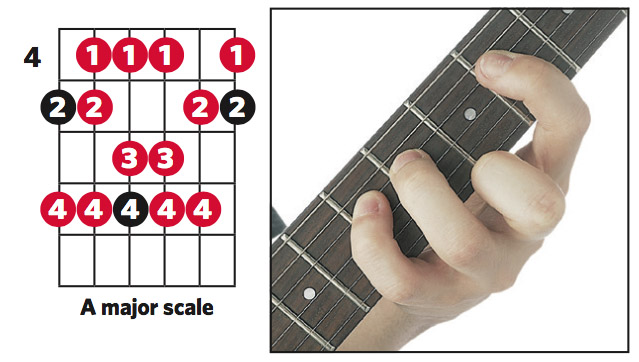
The fret box diagram illustrates the fret hand fingering for the A major scale using blackness dots for root notes and red dots for other scale tones. The photo shows office of the scale existence played on the fourth string with the kickoff, third and 4th fingers.
Guitar techniques: Picking
Downwardly and up-picking
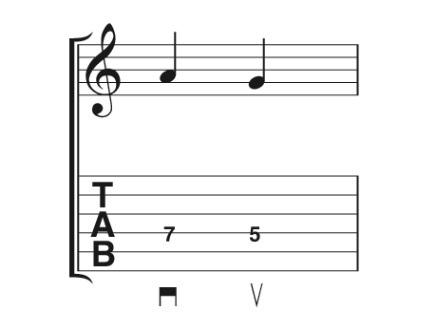
The symbols nether the tab tell you the commencement note is to be down-picked and the second note is to exist up-picked.
Tremolo picking
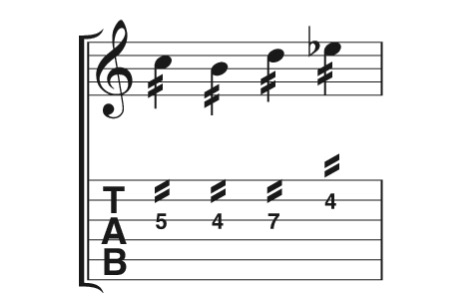
Each of the four notes are to be alternate-picked (downwardly- and up-picked) very apace and continuously.
Palm muting
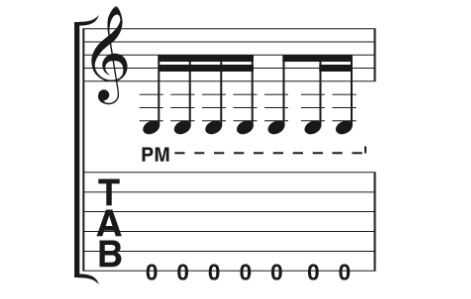
Palm-mute by resting the edge of your picking hand palm on the strings near the span saddles.
Pick rake
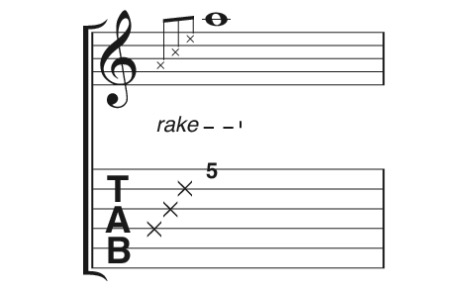
Drag the option across the strings shown with a single sweep. This is often used to augment a rake's last note.
Arpeggiated chord
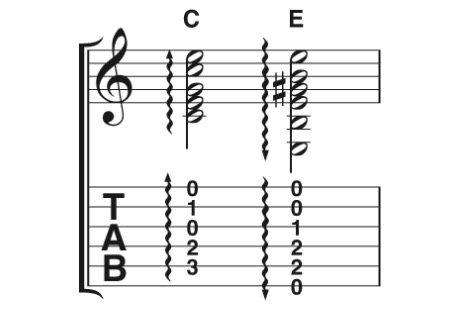
Play the notes of the chord by strumming across the relevant strings in the direction of the pointer head.
Fretting Hand
Hammer-on & pull-off
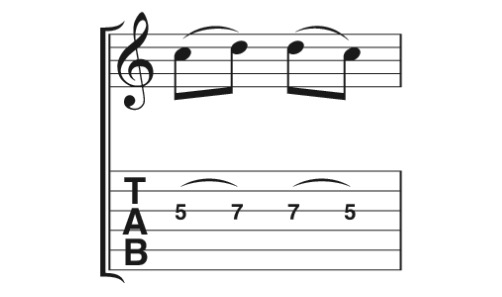
Option the showtime note and so hammer down on the string for the second notation. Pick the third note and pull-off for the fourth notation.
Note trills
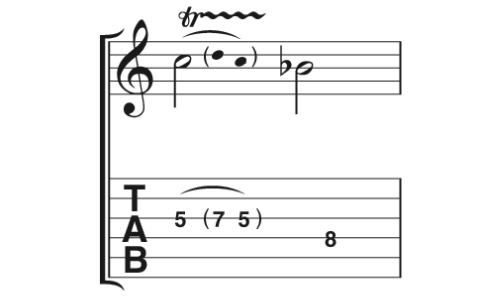
Subsequently picking the commencement note, rapidly alternate between the two notes shown in brackets using hammer-ons and pull-offs.
Slides (glissando)
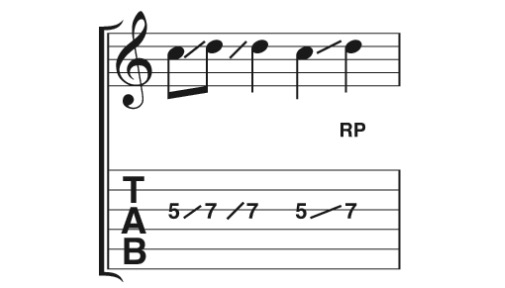
Pick the offset annotation and so slide to the next. For the last 2 notes option the first, slide to the next and so re-pick it (RP).
Fret-manus tapping
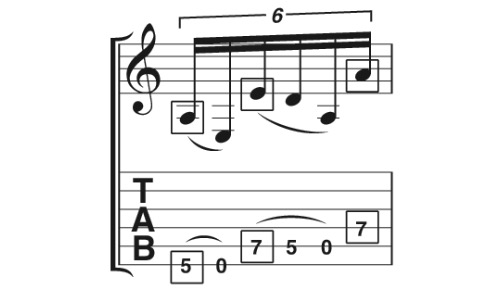
Sound the notes marked with a square by hammering-on/tapping with your fret-hand fingers, instead of picking.
Fret-hand muting
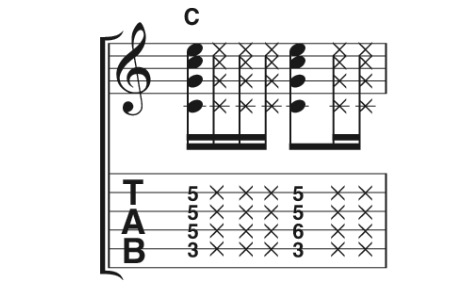
X markings represent notes and strings that are muted by your fret hand when struck by your picking manus.
Bending and vibrato
Curve and release
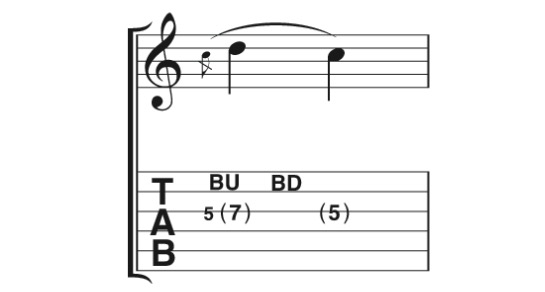
Fret the first note (here, the 5th fret) and bend up to the pitch of the bracketed note, before releasing again.
Re-picked curve
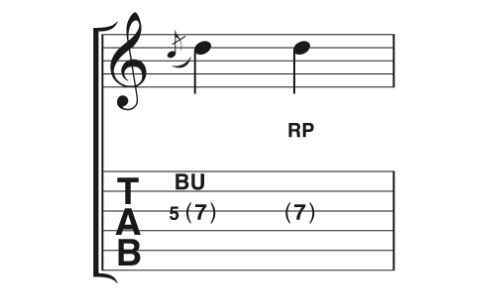
Bend up to the pitch shown in the brackets, then re-pick the annotation while property the aptitude note at the pitch shown.
Pre-bend
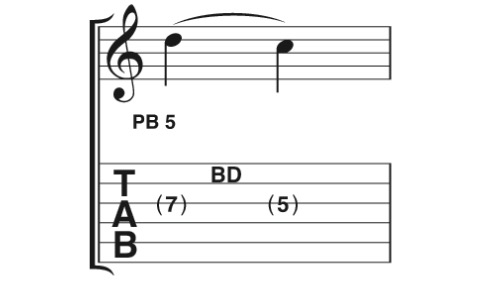
Silently bend the cord up from the fifth fret (PB5) to the pitch of the seventh fret note, pick it and release to the 5th fret note.
Quarter-tone bend
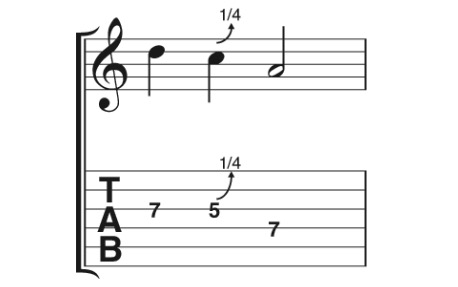
Choice the notation then bend upwards a quarter-tone (a very small amount). This is sometimes referred to as a 'dejection gyre'.
Vibrato
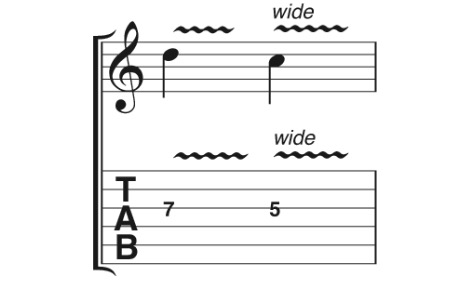
Your fretting mitt vibrates the string by pocket-sized bend-ups and releases. Exaggerate this result to create a 'wide' vibrato.
Harmonics
Natural harmonics
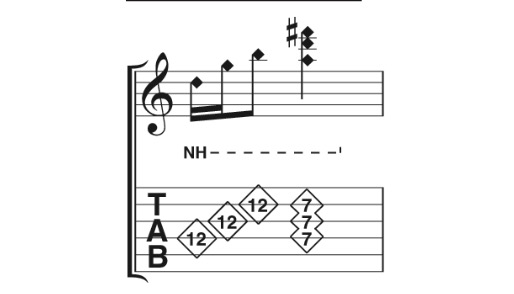
Pick the note while lightly touching the cord directly over the fret indicated. A chiming harmonic results.
Artificial harmonics
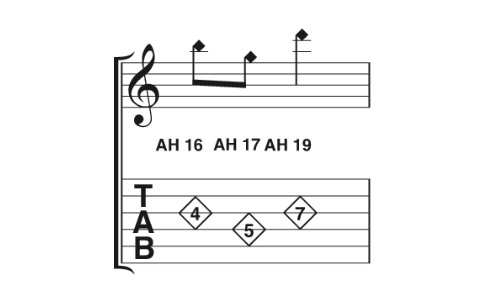
Fret the note as shown, then lightly place your index finger direct over 'ten' fret (AH 'x') and choice (with a pick, p or a).
Pinched harmonics
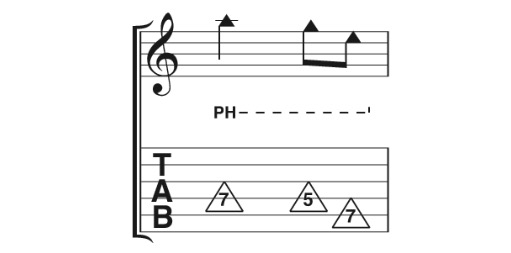
Subsequently fretting the note in the triangle, dig into the string with the side of your thumb equally you sound information technology with the choice.
Tapped harmonics
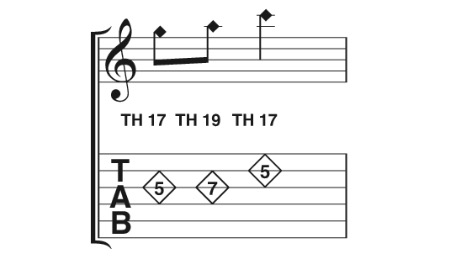
Place your finger on the notation as shown, only sound it with a quick pick paw tap at the fret shown (TH17) for a harmonic.
Touched harmonics

A previously sounded note is touched above the fret marked TCH (eg, TCH 9) for it to audio a harmonic.
Vibrato bar/whammy bar
Whammy bar bends
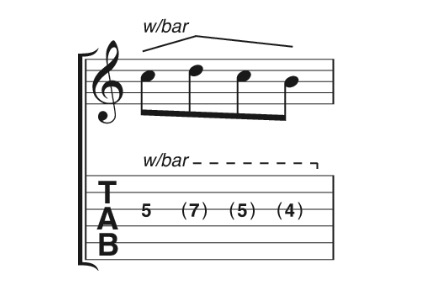
The annotation is picked as shown, then the vibrato bar is raised and lowered to the pitches shown in brackets.
Scoop and doop
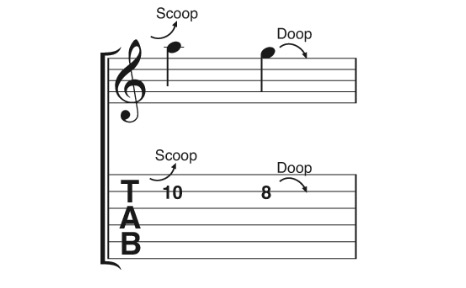
Scoop: depress the bar just before striking the note and release. Doop: lower the bar slightly afterward picking annotation.
Sustained note and divebomb
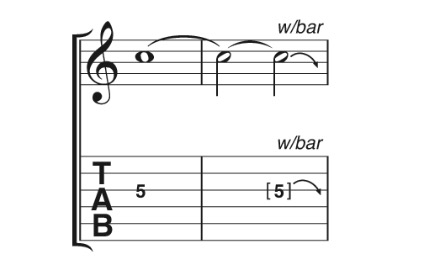
A note is sustained and so the vibrato bar is depressed to slack. The square subclass indicates a further articulation.
Irrigate
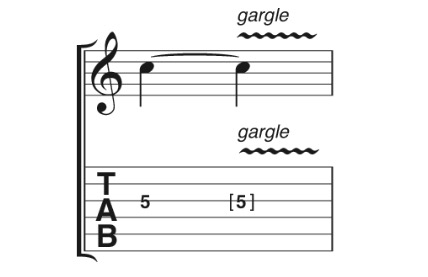
Sound the annotation and 'moving picture' the vibrato bar with your picking paw then information technology 'quivers'. This results in a 'gargling' sound!
Whammy bar vibrato
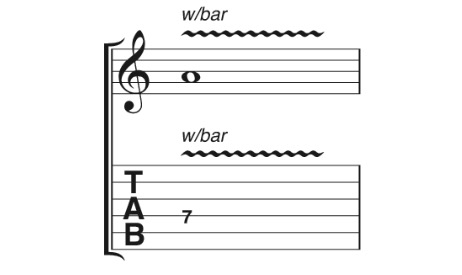
Gently rock the whammy bar to repeatedly bend the pitch upward and down. This sounds similar to fret hand vibrato.
Others
Pick scrape
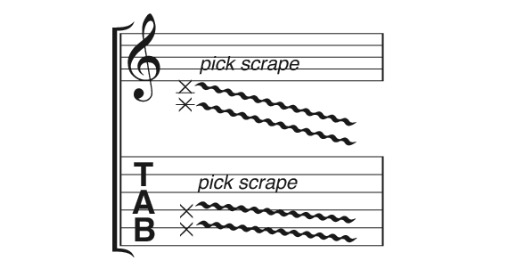
The edge of the choice is dragged either down or upwardly along the lower strings to produce a scraped sound.
Violining
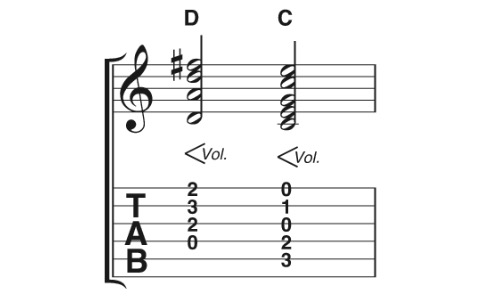
Turn the book control down, sound the note(south) and and then turn the book up for a smooth fade in.
Finger numbering
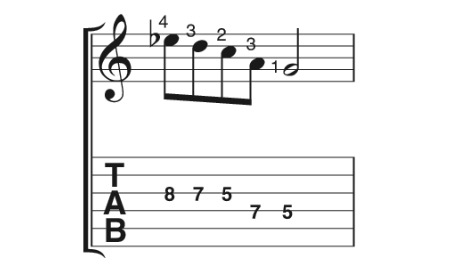
The numbers in the traditional notation refer to the fingers required to play each note.
pima directions
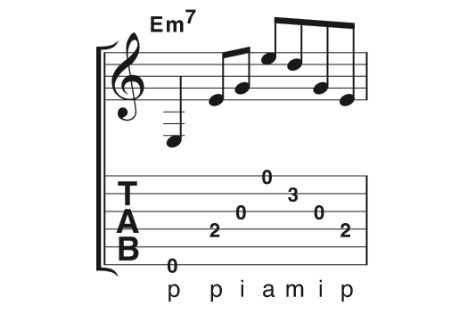
Any kind of fingerpicking requirements are shown at the bottom of the tab notation.
Pick-hand tapping
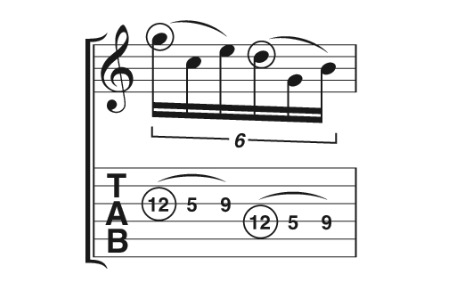
Tap (hammer-on) with a finger of your picking hand onto the fret marked with a circle. Usually with 'i' or 'thou'.
Now you've got the hang of reading tab, attempt learning a few open up-position guitar chords.
Source: https://www.musicradar.com/how-to/ultimate-guitar-tab-guide
Post a Comment for "What Are the Letters in Tab Guitar Reading"